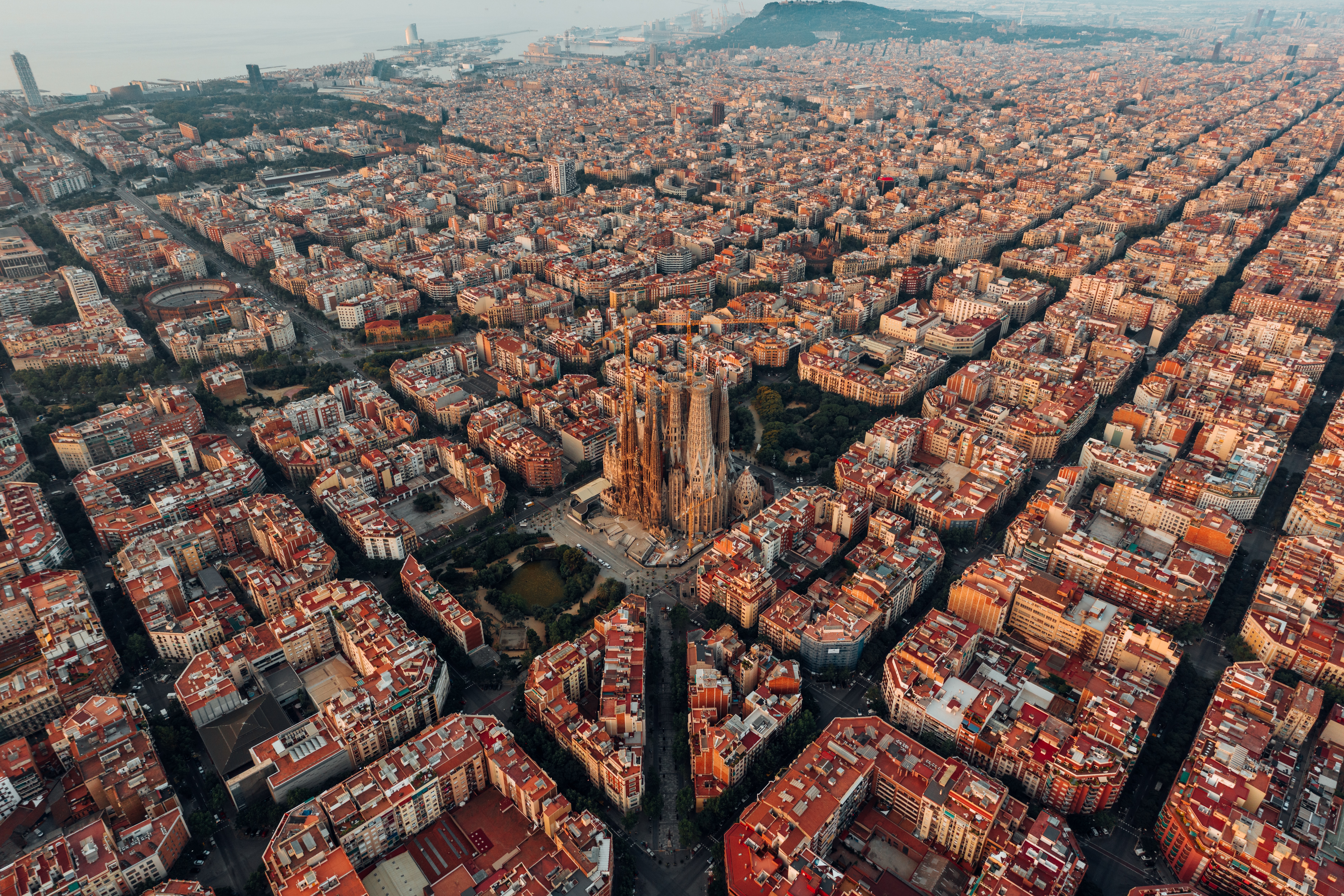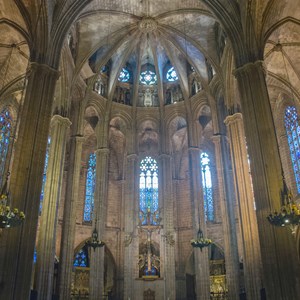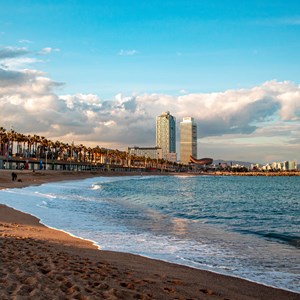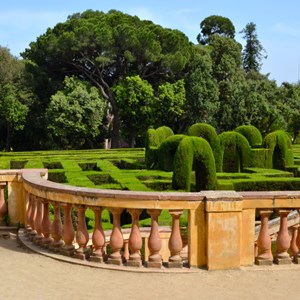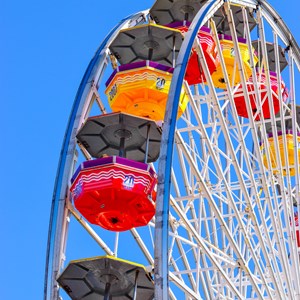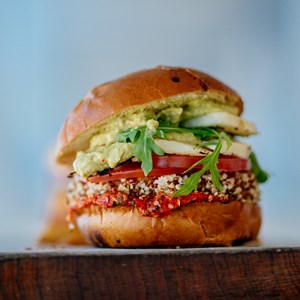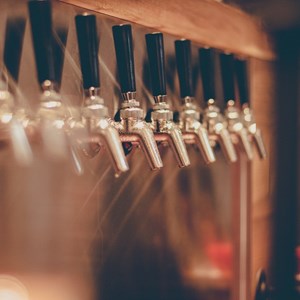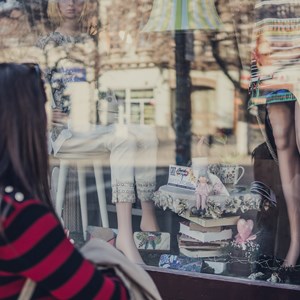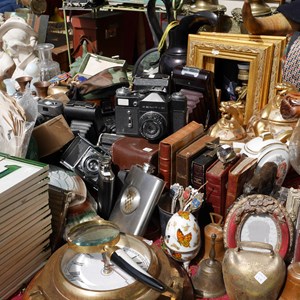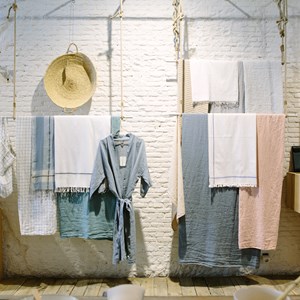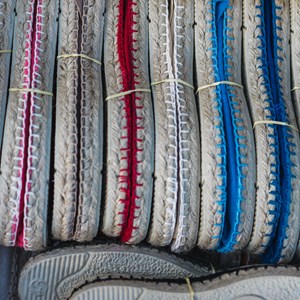

Impressive architecture and hip restaurants meet a sunny Spanish climate and beautiful beaches. This has transformed Barcelona, in just a few decades, from a rough port city into one of Europe's — if not the world's — premier destinations. Stroll along La Rambla and Passeig de Gràcia, admire Gaudí's masterpieces, visit the colourful Market of La Boqueria, lose yourself in the Gothic Quarter, bask in the sun at Barceloneta beach, and discover some of the city's vibrant late-night haunts while you're at it.
The City
Like many other cities in the Mediterranean, Barcelona was founded by the Romans. The original settlement, called Barcino, was a small port located in the same spot as today's cathedral. The town was overshadowed by Tarragona, the capital of the province. Both the Visigoths and the Moors invaded Barcelona; however, their influence was not as important to the future of the city as the arrival of the Franks in the late 9th century. It was at that point that Barcelona and Catalonia started shaping their own identity, different from the rest of Spain.
This is most apparent in the language – Spanish, or Castilian, has many Arabic words, while Catalan has many French words instead. So Catalan is not a Spanish dialect, but a language in its own right, related to other Romance languages.
Barcelona's history is seen everywhere in the city. The oldest areas are located by the sea, including the shopping enclave Barri Gotic. On the other side of the main boulevard, La Rambla, lies the legendary Raval district. Until the 1980s, this was the slum area, home to the city's own Chinatown (Barrio Chino) and the red light district. Today, designer shops and cafés have moved in. Further north is the fashionable Eixample neighbourhood, an area created as a result of the 19th-century expansion of the city.
Download our free, in-depth pdf guide for up-to-date tourist and general information on Barcelona, including the best places to stay, where to eat, drink, and party, as well as main attractions and must-have experiences in the Catalonian capital.
Top 10 for Architecture Lovers
Barcelona is known for its rich architectural heritage and is home to some of the most iconic and innovative buildings in the world. The architecture of Barcelona is special for a number of reasons, including its unique blend of historical and modern styles, its use of light and colour, and its emphasis on functionality and innovation.
One of the most notable architectural movements in Barcelona is the Art Nouveau style, also known as the Catalan modernism or modernism, which was developed in the late 19th and early 20th centuries. This style is characterized by its use of organic forms, intricate decoration, and bold use of colour and light. The most famous examples of this style in Barcelona include the works of Antoni Gaudí, such as the Sagrada Familia, La Pedrera and Park Güell.
In addition to the Art Nouveau style, Barcelona is known for its modernist architecture, which emerged in the 20th century and was characterized by the use of new materials and techniques, as well as a focus on functionality and simplicity. These buildings, such as the former Hospital de la Santa Creu i Sant Pau, Norman Foster's Torre de Collserola and Calatrava's Torre Telefónica, are considered to be some of the most innovative and influential works of modern architecture.
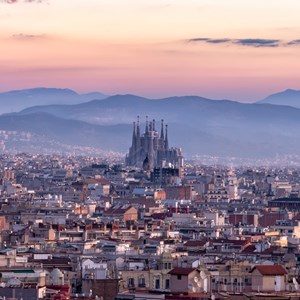 basiczto/Shutterstock.com
basiczto/Shutterstock.com
La Sagrada Família
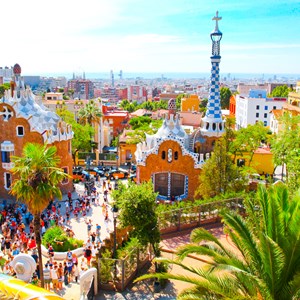 Vladitto/Shutterstock.com
Vladitto/Shutterstock.com
Park Güell
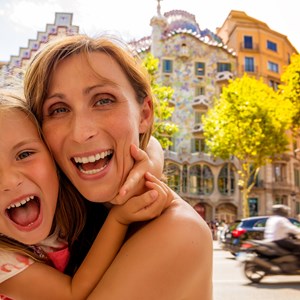 altafulla/Shutterstock.com
altafulla/Shutterstock.com
Casa Batlló
 Arnau Miguel/Shutterstock.com
Arnau Miguel/Shutterstock.com
Casa Milà — La Pedrera
 OnedayPix/Shutterstock.com
OnedayPix/Shutterstock.com
Casa Vicens
 TTstudio/Shutterstock.com
TTstudio/Shutterstock.com
Basilica de Santa Maria del Mar
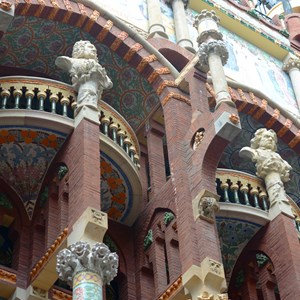 jiawangkun/Shutterstock.com
jiawangkun/Shutterstock.com
Palau de la Música Catalana
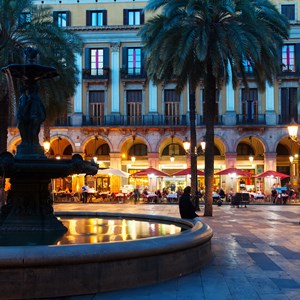 Iakov Filimonov/Shutterstock.com
Iakov Filimonov/Shutterstock.com
Plaça Reial
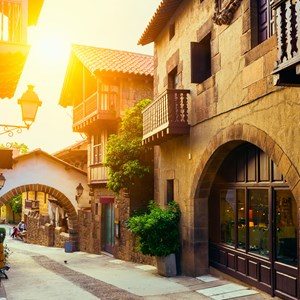 Catarina Belova/Shutterstock.com
Catarina Belova/Shutterstock.com
Poble Espanyol
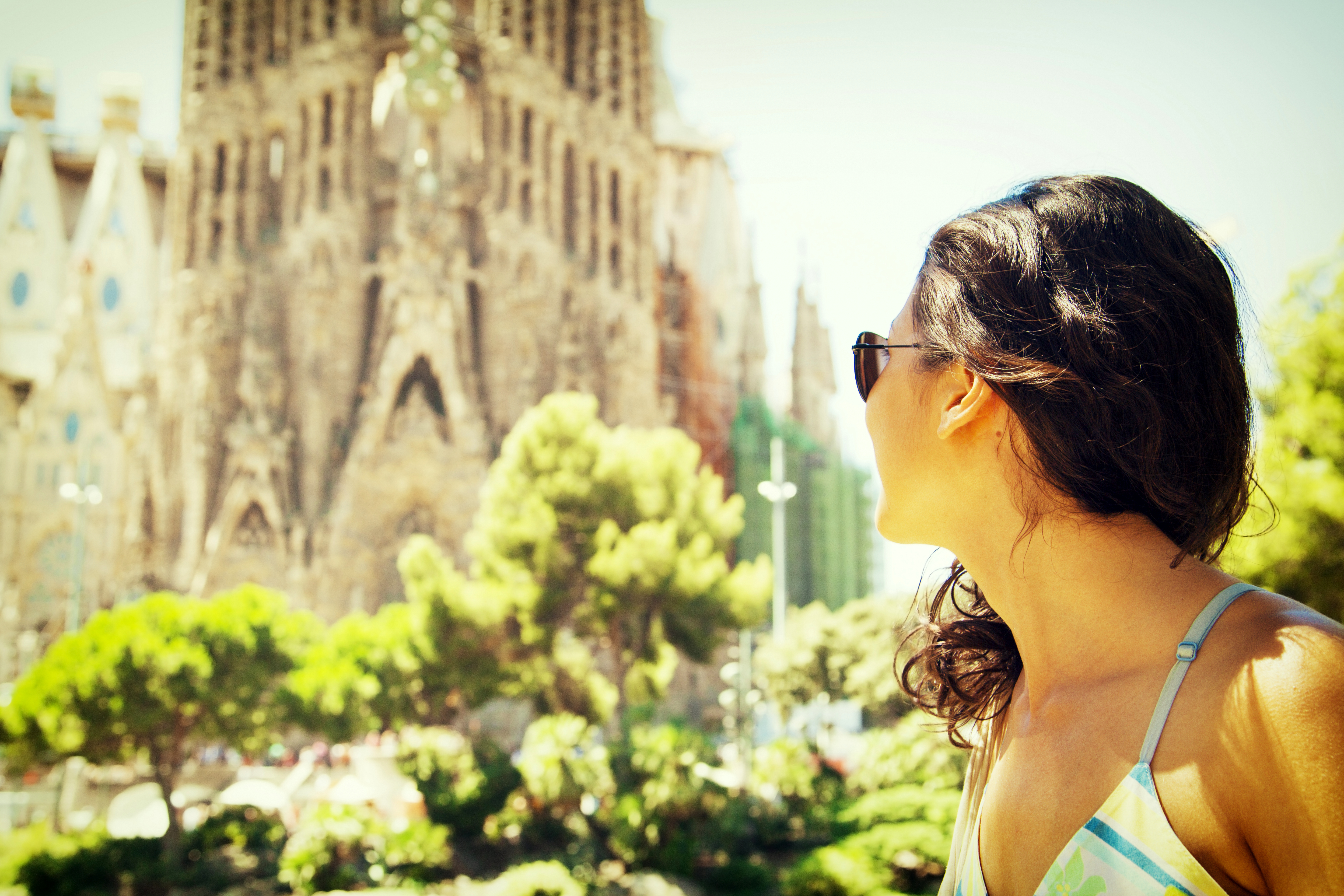 Kemal Taner/Shutterstock.com
Kemal Taner/Shutterstock.com
Do & See
Barcelona's impressive range of sights caters to all tastes – whether you're an architect, a designer, a football fan, a historian, or even a city planner – there is something for everyone in the most self-assured city on the Mediterranean.
You can start your day by losing yourself in the narrow medieval streets of the Gothic Quarter, then take a stroll on La Rambla and Passeig de Gràcia, and why not enjoy the Meditteranean sun in one of the city's many stunning beaches?
Just be sure to visit some of Gaudí's masterpieces, including La Sagrada Familia, Casa Milà, Casa Batlló, and the mesmerizing Park Güell.
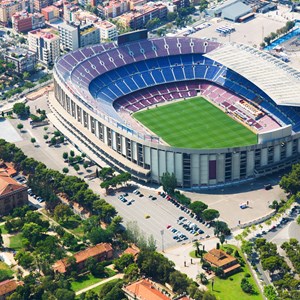 Iakov Filimonov/Shutterstock.com
Iakov Filimonov/Shutterstock.com
Camp Nou
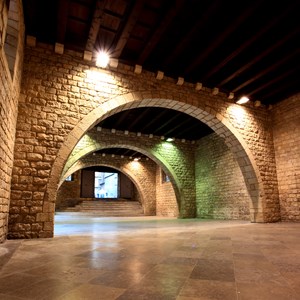 gary718/Shutterstock.com
gary718/Shutterstock.com
Picasso Museum
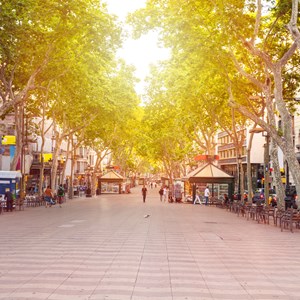 LALS STOCK/Shutterstock.com
LALS STOCK/Shutterstock.com
La Rambla
 Daxiao Productions / Shutterstock.com
Daxiao Productions / Shutterstock.com
Barcelona City Tour Hop-On Hop-Off
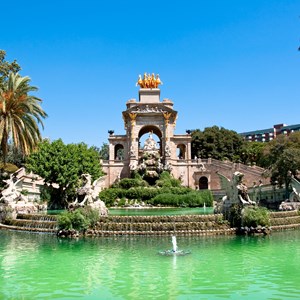 lornet/Shutterstock.com
lornet/Shutterstock.com
Ciutadella Park
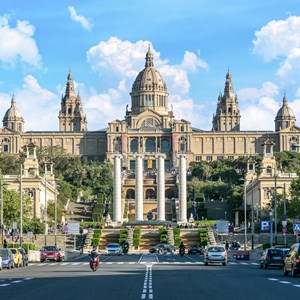 Suradech Singhanat/Shutterstock.com
Suradech Singhanat/Shutterstock.com
National Art Museum of Catalonia
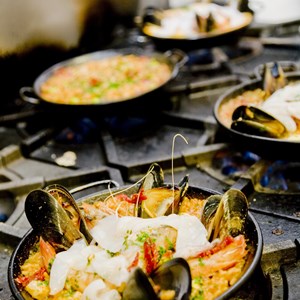 Will Freeland/Shutterstock.com
Will Freeland/Shutterstock.com
Interactive Spanish Cooking Experience
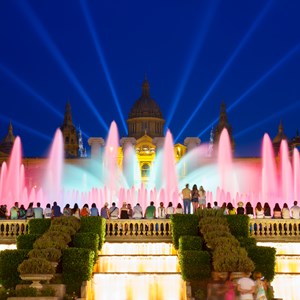 Neirfy/Shutterstock.com
Neirfy/Shutterstock.com
Magic Fountain of Montjuïc
 Fotokon/Shutterstock.com
Fotokon/Shutterstock.com
Aquarium de Barcelona
 Kenneth Dedeu/Shutterstock.com
Kenneth Dedeu/Shutterstock.com
View — The Bunkers
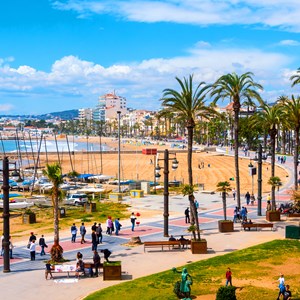 M.V. Photography/Shutterstock.com
M.V. Photography/Shutterstock.com
Sitges
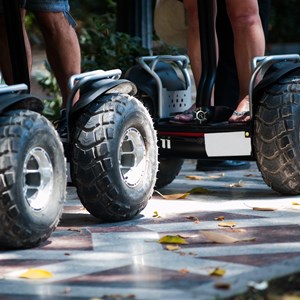 mariait/Shutterstock.com
mariait/Shutterstock.com
Barcelona Segway Tour
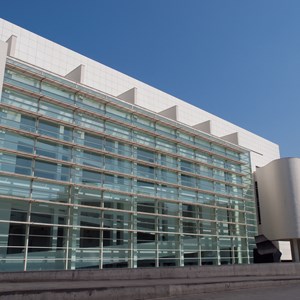 Teo Stuivenberg/Shutterstock.com
Teo Stuivenberg/Shutterstock.com
Barcelona Museum of Contemporary Art – MACBA
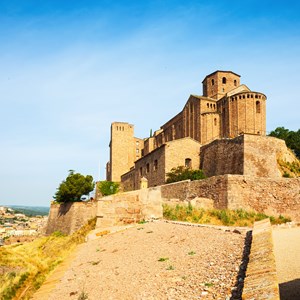 Iakov Filimonov/Shutterstock.com
Iakov Filimonov/Shutterstock.com
Cardona Castle
 FastMotion/Shutterstock.com
FastMotion/Shutterstock.com
Gaudí Experiència
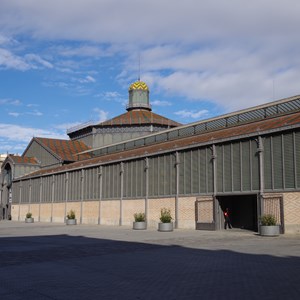 Marc Canela Fotografia/Shutterstock.com
Marc Canela Fotografia/Shutterstock.com
El Born Cultural & Memorial Centre
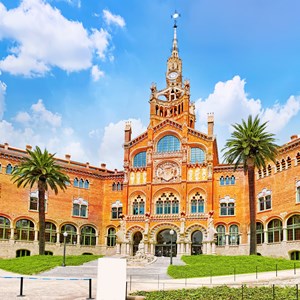 Brian Kinney/Shutterstock.com
Brian Kinney/Shutterstock.com
Sant Pau Art Nouveau Site
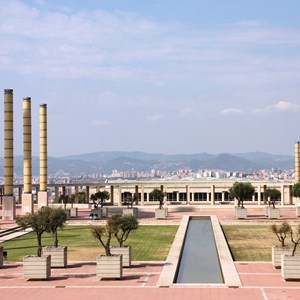 Tupungato/Shutterstock.com
Tupungato/Shutterstock.com
Olympic Park Montjuïc
 Yulia Grigoryeva/Shutterstock.com
Yulia Grigoryeva/Shutterstock.com
Dining
The easiest thing is to divide Barcelona's overwhelming range of restaurants into two categories: the new and the old. Some of the world's most modern restaurants, managed by the world's most innovative chefs (the most famous is Ferrán Adrià) can be found here, but there is also traditional Catalonian cuisine, which, despite being heavy on occasion, includes very good vegetable dishes: samfaina, a kind of ratatouille; escalivada, grilled, peeled peppers, aubergines, and onions; espinacs a la Catalana, spinach fried with garlic, pine nuts, and raisins, among others. Best known is the simple rustic pa amb tomàquet: a slice of bread with olive oil, salt, and freshly crushed tomatoes.
"The new ones" in particular may be expensive, but many of the best-known chefs' apprentices have now opened their own lower-priced restaurants. Generally speaking, "the old ones" provide better value for money, although even the traditional restaurants know how to charge. You should always reserve a table in Barcelona, and dinner here is not served until 9 pm.
 Shebeko/Shutterstock.com
Shebeko/Shutterstock.com
Cal Pep
 Kzenon/Shutterstock.com
Kzenon/Shutterstock.com
Banna
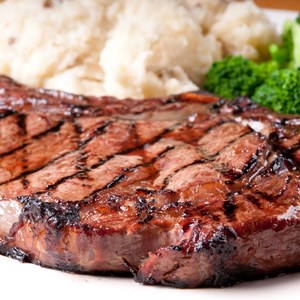 farbled/Shutterstock.com
farbled/Shutterstock.com
El Filete Ruso
 tradville/Shutterstock.com
tradville/Shutterstock.com
Poble Espanyol: the Richness of Traditional Spanish Cuisine
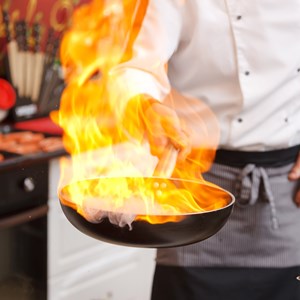 Shebeko/Shutterstock.com
Shebeko/Shutterstock.com
UMA
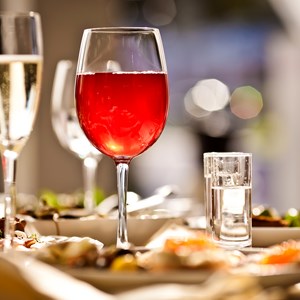 Andrey Bayda/Shutterstock.com
Andrey Bayda/Shutterstock.com
Blavis
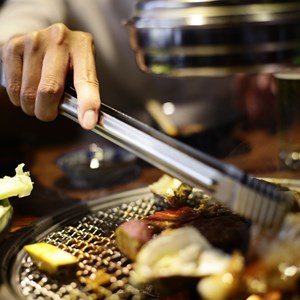 Quang Mau Thanh/Shutterstock.com
Quang Mau Thanh/Shutterstock.com
Carlota Akaneya
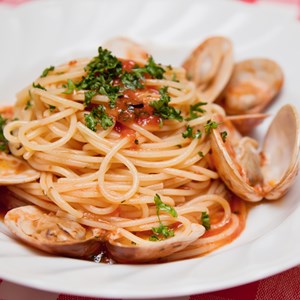 marinatakano/Shutterstock.com
marinatakano/Shutterstock.com
Piazze d'Italia
 Shebeko/Shutterstock.com
Shebeko/Shutterstock.com
Viana Barcelona
 leungchopan/Shutterstock.com
leungchopan/Shutterstock.com
Mian
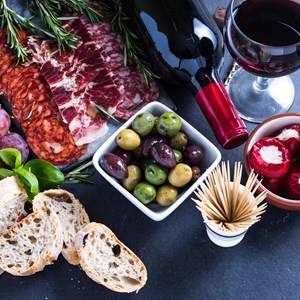 marcin jucha/Shutterstock.com
marcin jucha/Shutterstock.com
Bodega Biarritz 1881
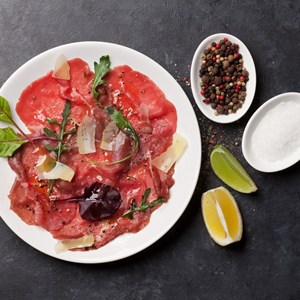 Evgeny Karandaev/Shutterstock.com
Evgeny Karandaev/Shutterstock.com
Cera 23
 Artem Shadrin/Shutterstock.com
Artem Shadrin/Shutterstock.com
Cafés
Barcelona's café culture is half Italian and comes with its own set of simple rules: café con leche (cafè amb llet in Catalan) is for breakfast, preferably with a croissant; mid-day, especially after a meal, the locals have an espresso, café solo (un cafè) or a cortado (un tallat), which is an espresso with milk (café Americano is what some would call watered-down versions of the two first coffees); in the afternoon, or after dinner, order a café solo corto, a strong espresso, or a carajillo — a café solo with Spanish brandy.
And since you are in Barcelona, you cannot leave the city without having some crispy churros with a hearty cup of hot chocolate.
 Ana del Castillo/Shutterstock.com
Ana del Castillo/Shutterstock.com
Cafè de l'Òpera
 Siegi/Shutterstock.com
Siegi/Shutterstock.com
Satan's Coffee Corner
 Pheniti Prasomphethiran/Shutterstock.com
Pheniti Prasomphethiran/Shutterstock.com
Café Salambó
 bajinda/Shutterstock.com
bajinda/Shutterstock.com
Cafès El Magnífic
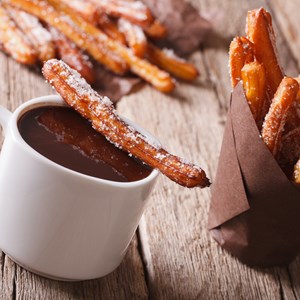 AS Food studio/Shutterstock.com
AS Food studio/Shutterstock.com
Granja M. Viader
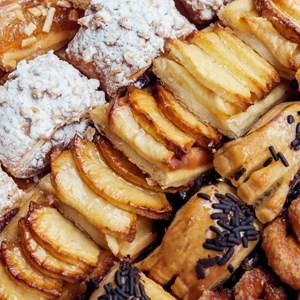 karnavalfoto/Shutterstock.com
karnavalfoto/Shutterstock.com
Caelum
 nelea33/Shutterstock.com
nelea33/Shutterstock.com
Churrería Laietana
Bars & Nightlife
Barcelona stays awake while the rest of Europe sleeps. Nightlife starts late, preferably at a bar. Catalans believe it’s smart to eat while drinking, so most bars also serve tapas. Barcelona’s trendy nightlife is constantly changing, so the best advice is to ask around for the latest and greatest places.
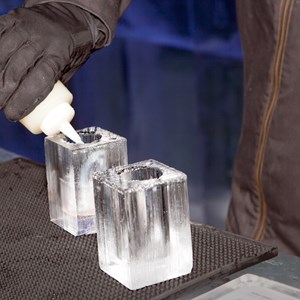 Marcin Sylwia Ciesielski/Shutterstock.com
Marcin Sylwia Ciesielski/Shutterstock.com
Icebarcelona
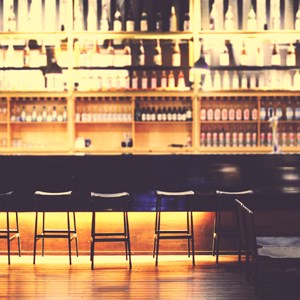 wedninth/Shutterstock.com
wedninth/Shutterstock.com
Marula Café
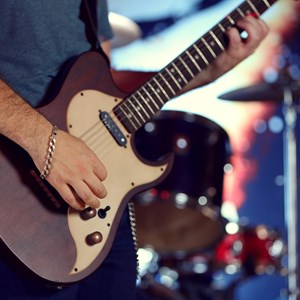 Africa Studio/Shutterstock.com
Africa Studio/Shutterstock.com
Sidecar Factory Club
 Rawpixel.com/Shutterstock.com
Rawpixel.com/Shutterstock.com
Jamboree
 Jag_cz/Shutterstock.com
Jag_cz/Shutterstock.com
La Whiskeria — Whisky & Cocktail Bar
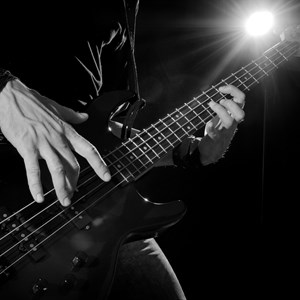 Sinelev/Shutterstock.com
Sinelev/Shutterstock.com
Sala Apolo
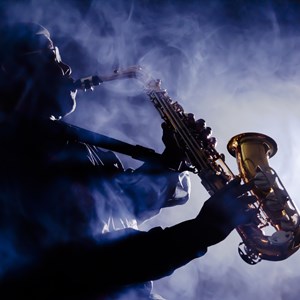 Geoff Goldswain/Shutterstock.com
Geoff Goldswain/Shutterstock.com
Harlem Jazz Club
 Brent Hofacker/Shutterstock.com
Brent Hofacker/Shutterstock.com
Kælderkold Craft Beer Bar
 oneinchpunch/Shutterstock.com
oneinchpunch/Shutterstock.com
CDLC Barcelona | Carpe Diem Lounge Club
 Thoom/Shutterstock.com
Thoom/Shutterstock.com
La Terrrazza
 Billion Photos/Shutterstock.com
Billion Photos/Shutterstock.com
Mojito Club
 Hadrian/Shutterstock.com
Hadrian/Shutterstock.com
Casino Barcelona
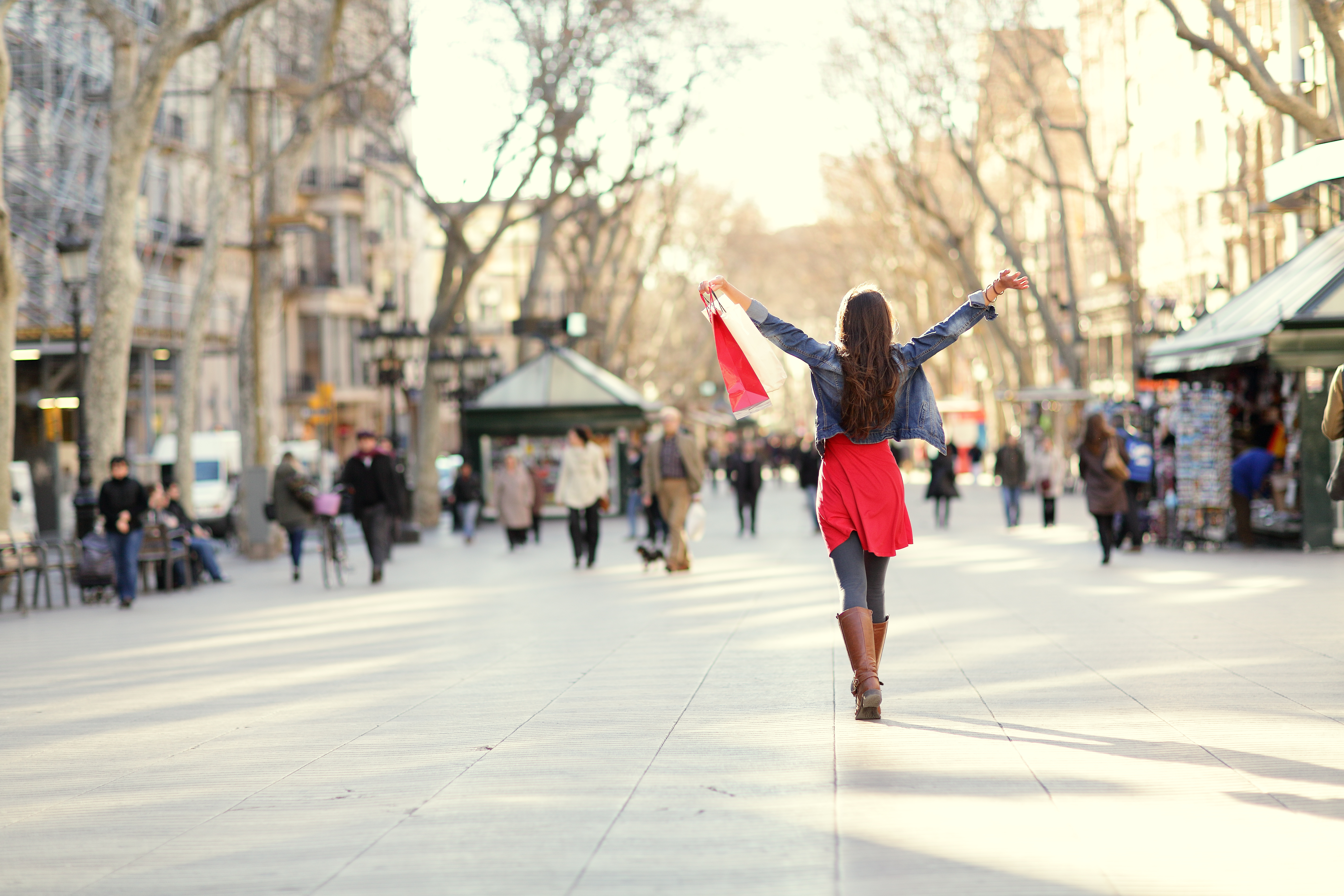 Maridav/Shutterstock.com
Maridav/Shutterstock.com
Shopping
Shopping in Barcelona offers lots of interesting browsing. Unusual shops can be found in most parts of the city, but those who want to be efficient should focus on Plaça Catalunya and the Gothic Quarter. This last one offers plenty of shopping opportunities throughout its maze of medieval streets – souvenirs, clothing, shoes, quirky shops, and everything you can think of, you will find here.
For those into high-end fashion, head to Passeig de Gràcia, Barcelona's version of the Champs-Élysées. Shopping malls abound around Barcelona, El Triangle and Maremagnum are the most popular ones among tourists due to their central location. The gigantic department store El Corte Inglés is located at Plaça Catalunya. Come here for the wares, but also for the people-watching.
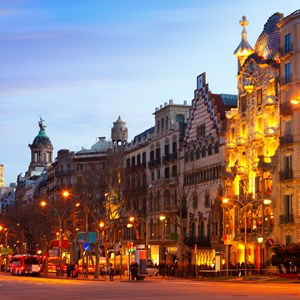 Iakov Filimonov/Shutterstock.com
Iakov Filimonov/Shutterstock.com
Passeig de Gràcia
 Iolanta Kli/Shutterstock.com
Iolanta Kli/Shutterstock.com
Mercado La Boquería
 HQuality/Shutterstock.com
HQuality/Shutterstock.com
Santa Caterina Market
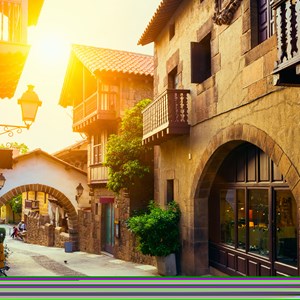 Catarina Belova/Shutterstock.com
Catarina Belova/Shutterstock.com
Poble Espanyol Crafts and Shopping Centre
 Iakov Filimonov/Shutterstock.com
Iakov Filimonov/Shutterstock.com
Tourist Information
Best Time to Visit
Barcelona, the second-largest city in Spain, is the first tourist destination of the country, ahead of its rival Madrid. The city is particularly appreciated for its climate because it enjoys beautiful and sunny days eight months per year. It is popular with tourists from around the world during the two summer months because of its high temperatures, which can reach up to 37°C. The many nearby beaches are perfect for a swim after a long day of sightseeing but expect a busy crowd.
Spring and autumn are, therefore, the best time to visit Barcelona. During these seasons, you can enjoy the sun and the beautiful and shining days away from the holidaymakers of July and August. Besides, the prices are more affordable, so it is easier to find a place to eat and sleep.
It is also possible to explore the Catalan capital during the winter because the climate is cool, but the temperatures are still mild. You will not find negative temperatures or frosts at this time of the year.
Address:
Email:
Phone:
Website:
More Information:
Frequently Asked Questions about Barcelona (FAQs)
Is Barcelona a safe city?
Yes. Although Barcelona is a big city – the second-largest in Spain and the most visited city in the country – it is still considered a fairly safe place for tourists. However, as with most popular tourist destinations, such as Paris, pickpockets and bag thieves are the biggest concerns here. So be careful when walking around and taking pictures near major tourist attractions, such as La Rambla, Plaça Catalunya, and La Sagrada Familia.
What is Barcelona famous for?
Barcelona, the capital of Catalonia, is famous for its remarkable architecture, gold-sand beaches, vibrant nightlife, world-class cuisine, and of course, its local football team, commonly known as Barça.
Is Barcelona expensive?
Yes, Barcelona is quite expensive to visit but still more affordable when compared to other European destinations, such as Paris, London, and Rome. As of today, the average cost per traveller in Barcelona is between €90-120 per day.
How many days do you need for Barcelona?
First-time travellers should try and plan around 4-5 days – enough time to visit the city's main attractions, explore its characterful neighbourhoods and still have time to kick back and relax at the beach.
Address:
Email:
Phone:
Website:
More Information:
Passport / Visa
Spain can be visited visa-free for up to 90 days by citizens of Australia, New Zealand, Japan, South Korea, Taiwan, Malaysia, Israel, UAE and most countries in America. If you are unsure whether or not you need to apply for a visa, we recommend contacting the embassy or consulate in your country. International (non-Schengen) travellers need a passport that is valid for at least 3 months after the end of their intended trip in order to enter the Schengen zone. Citizens of Schengen countries can travel without a passport but must have a valid ID with them during their stay.
Address:
Email:
Phone:
Website:
More Information:
Barcelona El Prat Airport (BCN)
Josep Tarradellas Barcelona–El Prat Airport, also known as Barcelona Airport or simply El Prat Airport, Barcelona’s main airport, is located 13 km southwest of the city centre.
Aerobus serves both terminals every 5 minutes before leaving for the city centre with stops at Plaça Espanya, Plaça Universitat, and Plaça Catalunya. A one-way Aerobus ticket costs 5.90€ (10.20€ for a round trip) and the trip takes about 25 minutes to reach the city centre.
Local trains leave for Barcelona every 30 minutes (from the train station next to terminal 2). From terminal 1 to terminal 2 there is a free connecting shuttle bus that takes around 10 minutes. The train takes about 30 minutes to Barcelona's Sants station and the ticket costs 4 €.
Taxis are available just outside the terminals. The price depends on traffic, luggage, day of the week and time.
Consult the airport website to learn more about other public transport routes servicing the airport.
Address: Aeropuerto Josep Tarradellas Barcelona-El Prat
Email:
Phone:
Website: www.aena.es/en/josep-tarradellas-barcelona-el-prat.html
More Information:
Girona-Costa Brava Airport (GRO)
Girona airport lies about 100 km from the centre of Barcelona, and there are three ways of getting between the two places.
Buses will take you to Estacio d’Autobusos Barcelona Nord. They depart on a schedule based on the flights' arrival times. Prices for a one-way ticket start from 16 €.
A taxi to Barcelona city centre may cost around 125 €, so a better option might be to stay overnight at Girona and travel by bus the next day.
There are also trains to and from Barcelona from central Girona but you will have to find a solution to get from Girona train station to the airport.
Address: Girona-Costa Brava Airport
Email:
Phone: +34 913 21 10 00
Website: www.aena.es/en/girona-costa-brava.html
More Information:
Public Transport
Tickets for the underground and trams can be bought from travel information booths and from stations. They are valid for one trip. Bus tickets are bought from the driver. There is also a selection of different travel cards to purchase if you know that you will be travelling a lot.
Address:
Email:
Phone:
Website: www.tmb.cat/en/home
More Information:
Taxi
Barcelona’s black and yellow taxis can be hailed on the street, at stations or called by telephone. Standard fares apply between 6am and 10pm from Monday to Friday. At all other times, including public holidays, fares are higher. Remember that drivers often have minimal small change and do not take credit cards.
Barnataxi: +34 933 22 22 22
Ràdio Taxi: +34 933 03 30 33
Another option for lower fares is the rideshare company Uber.
Address:
Email:
Phone:
Website: radiotaxi033.com
More Information:
Post
The post offices in Spain are called "Correos" (Correu in Catalan). Stamps can be purchased from post offices and kiosks - "Estancos". The main post office is located at Plaça d'Antonio López, near the Barceloneta metro station, and it is open from Monday to Friday 8:30 am to 8:30 pm.
Address: Plaça d'Antonio López, Barcelona
Email:
Phone: +34 934 86 83 02
Website: www.correos.es/es/es/particulares
More Information:
Pharmacy
Pharmacies in Barcelona take turns operating the after-hours service. The nearest pharmacy that is open at night will be posted on the door of adjacent pharmacies. Pharmacies with 24-hour service are:
Farmàcia Clapés
La Rambla 98
+34 933 01 28 43
Farmàcia A. Torres
Carrer d'Aribau 62
+34 934 53 92 20
Address:
Email:
Phone:
Website:
More Information:
Telephone
Country code: +34
Area code: 93
Address:
Email:
Phone:
Website:
More Information:
Electricity
220 volts (125 volts in some older buildings), 50 Hz
Address:
Email:
Phone:
Website:
More Information:



